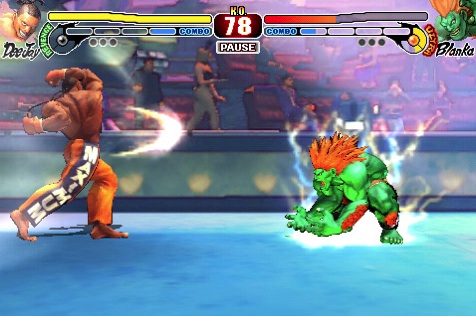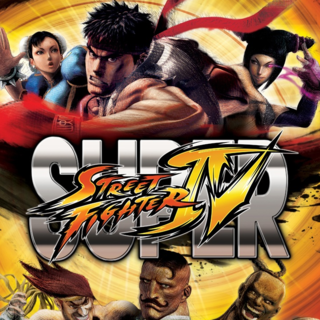The storied franchise has seen many evolutions through the years, from its humble beginnings in 2D pixelated glory, to its newest 3D incarnation on the Nintendo 3DS. Much about it has remained the same, however, from its cast of unforgettable mainstays, to its competitive gameplay, Super Street Fighter 4 has transitioned successfully from the small screen to the even smaller screen, with only a hiccup or two along the way.
Much like its predecessors, Super Street Fighter 4 has you choosing a fighter, each one representing a different fighting style and culture, and working your way past various opponents to become the champion, while loosely participating in some semblance of a story mode, highlighted by a simple animated cutscene at the beginning and ending of your character’s journey. These are usually short and don’t give much insight into most of the characters or their motives, but a deep, engaging story probably isn't the reason you’re playing the game anyway. Most of these characters will probably be familiar to fans of the series, especially so if you’ve played the console version of the game.
There’s Arcade Mode, which is the classic mode, built with a selectable difficulty and match/timer options, followed by Versus and 3D Versus modes. The only difference between these two is the 3D effect is either on or off, otherwise this mode seems to be for finding opponents via local wireless. Internet Mode is where you can challenge or be challenged by opponents from all over the world, or just on your friends list. The few matches I’ve had in versus mode, against internet opponents have been amazingly lag free, however.
The Challenge Mode is much like the console versions, in that, it asks you to pick a fighter and then tasks you with performing the various moves and combos, in an effort to learn the basics and work your way up from there towards more advanced techniques. There’s also a Training Mode that lets you practice in a holodeck-like training stage against an opponent with parameters you can control.

There is a screen showing the player data, as well, which is basically your stats and percentages with a given character or characters. There’s also a figurine gallery, where you can “purchase” collectible figures of various fighters and store them in an album. These figurines have specific levels, hp and attack values as well as combos attached and can be traded with and even used to battle (as a team) via the street pass feature.
Gameplay wise, the classic Street Fighter gameplay is still at the forefront of the game itself. You perform moves by mixing up the various attacks consisting of light, medium and heavy punches and kicks, while more complex moves may require half circle or multi button and directional movements. Those familiar to the genre will have no trouble adapting, as the 3DS’ analog stick actually works quite well, despite a hitch here and there. The directional pad is an option as well, though the stick seems a much more fluid option.
There have been a few tweaks to the gameplay to make it easier for handhelds as well. Two “combo” specialties, as well as two special moves have been mapped to the bottom touchscreen, letting you pull off these four moves, two of which become active at certain points in the match, by just tapping a button. In theory, this makes pulling off moves no more difficult than tapping the screen, which is a nice feature, but it creates a strange disconnect within the game.
By mapping moves to the touchscreen, you aren’t forced to learn the moves, as you are in the console versions, so even novices have a fighting chance on the easier difficulty levels. This is fine, but when it comes to playing internet opponents, it invariably comes down to who can tap the touchscreen the fastest at times. I’m not saying skill doesn’t still play a part, but it seems that knowledge of the moves can feel like it takes a backseat to a fast trigger finger, so to speak.
Visually, the game looks almost as colorful and bright as its console big brothers. Stage backgrounds may be static instead of dynamic, but they are still incredibly detailed and lush vistas. Characters themselves are impressively modeled, and there are some nifty effects, such as the light from projectiles and other special moves reflecting off surfaces. The mini animated scenes that bookend the Arcade Mode serve to lighten the mood considerably and fit in well.
The soundtrack is as dynamic as ever, with punchy beats and the familiar sounds of classic SF filling the miniature speakers of the 3DS. Everything sounds quite nice, however, from Vega’s claw hitting the ground, to Juri’s seductive, yet obnoxious voiceovers.
Super Street Fighter IV may not break new ground on the 3DS, but it remains an impressive staple of a fighting game and adds a sorely needed genre to the vaulted handheld’s library of must play games.

